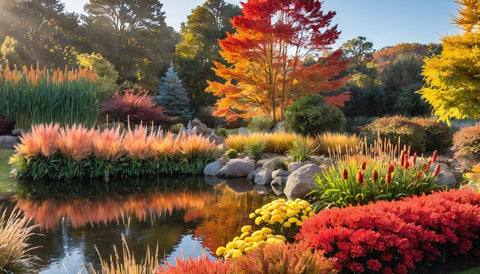Understanding Texture in Landscapes
When we talk about texture in landscaping, we’re diving into how various elements interact to create visual interest and depth. Just like a painter uses different brush strokes, a landscape designer can play with contrasting textures to make an area pop. Trees, with their diverse shapes, colors, and sizes, can significantly contribute to this sensory experience.
Key Considerations for Selecting Trees
Before you rush out to pick a tree, there are a few important factors to consider to ensure your selection fits beautifully within your space. Think about the climate and hardiness zones, as not all trees will thrive in every area. Look into their growth habits: how will their leaves, bark, and branches interact with other plants? The size of the tree is crucial too—will it overshadow smaller plants or fit comfortably in your landscape? And let’s not forget about maintenance; some trees require a little TLC, while others are more laid-back.

Top Trees for Fall Textures
A. Ornamental Trees
1. Japanese Maple (Acer palmatum)
Ah, the Japanese Maple! This beauty is renowned for its delicate, hand-shaped leaves that transform into a vibrant palette of reds, oranges, and purples come fall. Their unique branching structure also creates visual intrigue, offering a layered texture that draws the eye. Planting a Japanese Maple is like adding a living sculpture to your garden!
2. Smoketree (Cotinus coggygria)
If you’re seeking whimsy, the Smoketree is your go-to. With feathery flower clusters that resemble fluffy puffs of smoke and intriguing bark that adds depth throughout the year, it's a showstopper. As fall approaches, its leaves explode into rich purples and golds, making it a fantastic focal point for any garden.
B. Deciduous Trees
3. Oak (Quercus spp.)
Oaks aren’t just foundational elements in our forests; they’re perfect for adding texture to your landscape. Varieties like the Red Oak showcase stunning fall foliage, transitioning from green to brilliant red and russet hues. Plus, their hearty bark has a rugged texture that brings an element of strength to your garden.
4. Sweetgum (Liquidambar styraciflua)
The Sweetgum tree is a texture wonder with its star-shaped leaves and vibrant fall colors. But the curiosity doesn’t stop there—its unique seed pods add an interesting visual layer to the landscape, offering both charm and a point of conversation for your guests!
C. Conifers and Evergreen Trees
5. Eastern Red Cedar (Juniperus virginiana)
Despite being an evergreen, the Eastern Red Cedar shines in the fall as its foliage takes on a rich, blue-green hue. The interesting texture of its scale-like leaves and aromatic wood provides a refreshing contrast against deciduous trees shedding their leaves, ensuring your landscape remains vibrant year-round.
6. Blue Spruce (Picea pungens)
With its striking bluish-gray needles, the Blue Spruce is a texture superstar. Not only does it serve as an eye-catching structure in your fall landscape, but its needles also offer a unique tactile feel, enhancing the overall experience of your garden.
Layering Textures with Companion Planting
To truly elevate your landscape design, consider companion planting. Pairing trees with shrubs and perennials not only diversifies textures but also creates a harmonious flow in your garden. Think about plants with contrasting leaf shapes, colors, and heights to achieve a layered effect that captivates the eye. For example, underplant your Japanese Maple with low-growing ferns or hostas to create a stunning combination.
Designing with Texture in Mind
When integrating textured trees into your landscape, take into account their spacing and placement. Group trees in clusters or stagger them to maximize visual interest while maintaining a natural look. It's all about balance—too close, and they can compete for attention; too far apart, and they might lose the cohesive effect you’re aiming for. Don't hesitate to experiment; landscaping is as much about personal expression as it is about botany!
Conclusion
As we wrap up, remember that the right trees can make all the difference in your fall landscape. By focusing on texture, you can create an engaging, vibrant outdoor space that resonates with beauty. So go ahead—get inspired, explore your options, and bring your vision to life in your own garden. We'd love to hear about your experiences with fall landscaping. What trees have you chosen for texture?
Call to Action
If you enjoyed this post and want more tips on landscaping and gardening, be sure to subscribe to our blog! Check out our related articles to enhance your gardening experience further.






























Comments (0)
There are no comments for this article. Be the first one to leave a message!